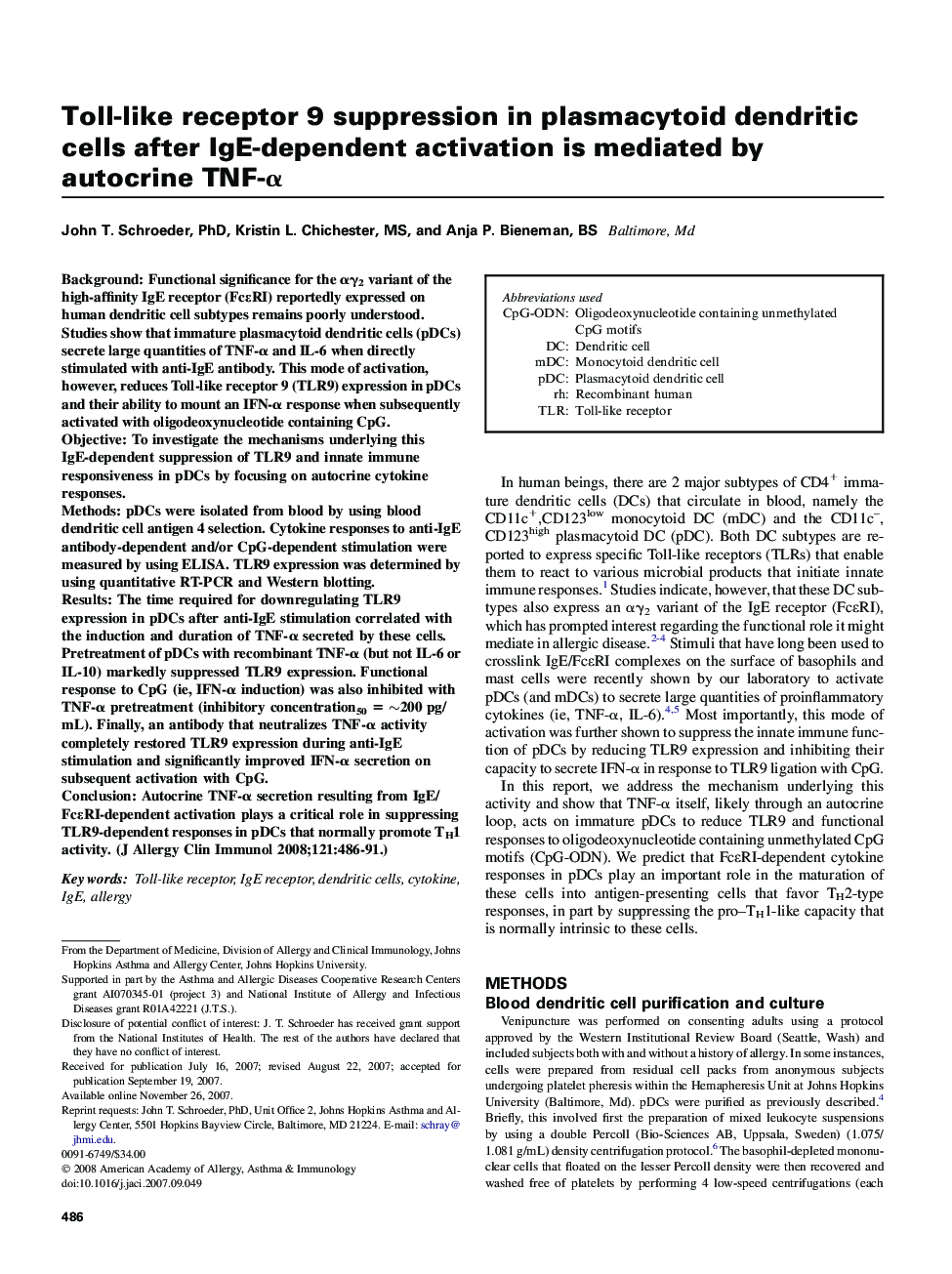| Article ID | Journal | Published Year | Pages | File Type |
|---|---|---|---|---|
| 3202777 | Journal of Allergy and Clinical Immunology | 2008 | 6 Pages |
BackgroundFunctional significance for the αγ2 variant of the high-affinity IgE receptor (FcεRI) reportedly expressed on human dendritic cell subtypes remains poorly understood. Studies show that immature plasmacytoid dendritic cells (pDCs) secrete large quantities of TNF-α and IL-6 when directly stimulated with anti-IgE antibody. This mode of activation, however, reduces Toll-like receptor 9 (TLR9) expression in pDCs and their ability to mount an IFN-α response when subsequently activated with oligodeoxynucleotide containing CpG.ObjectiveTo investigate the mechanisms underlying this IgE-dependent suppression of TLR9 and innate immune responsiveness in pDCs by focusing on autocrine cytokine responses.MethodspDCs were isolated from blood by using blood dendritic cell antigen 4 selection. Cytokine responses to anti-IgE antibody-dependent and/or CpG-dependent stimulation were measured by using ELISA. TLR9 expression was determined by using quantitative RT-PCR and Western blotting.ResultsThe time required for downregulating TLR9 expression in pDCs after anti-IgE stimulation correlated with the induction and duration of TNF-α secreted by these cells. Pretreatment of pDCs with recombinant TNF-α (but not IL-6 or IL-10) markedly suppressed TLR9 expression. Functional response to CpG (ie, IFN-α induction) was also inhibited with TNF-α pretreatment (inhibitory concentration50 = ∼200 pg/mL). Finally, an antibody that neutralizes TNF-α activity completely restored TLR9 expression during anti-IgE stimulation and significantly improved IFN-α secretion on subsequent activation with CpG.ConclusionAutocrine TNF-α secretion resulting from IgE/FcεRI-dependent activation plays a critical role in suppressing TLR9-dependent responses in pDCs that normally promote TH1 activity.
